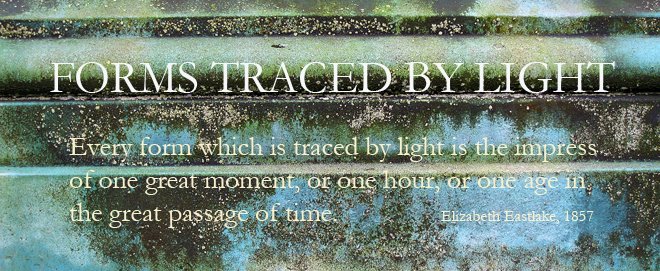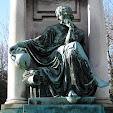Our friends Torrey and Dick arrived in Santa Fe this evening after the long long (all too familiarly) long drive from New Jersey - a drive on which they obviously did a great job in hunting down excellent places to eat and see - I had a rush of cross-country driving envy. So of course we welcomed them at Harry's, with the moon behind, sliding in and out of the clouds and the awning and lights of the Roadhouse signaling our welcome. We're hoping that they'll stay a good long time here (that's measure in years, not weeks or days). In some fantasy world, we all end up, in our eventual retirements, in each others' back yards.
Sunday, May 31, 2015
Saturday, May 30, 2015
in a more contemplative mode
My brain is still working overtime after a week in Cuba. Some Japanese-style contemplation was what I needed this evening: dinner at Izanami (the restaurant attached to Ten Thousand Waves, above Santa Fe), where one can eat eggplant and pickled burdock root and mochi wrapped in bacon and gaze at the sun going down on the wooded hills and the moon coming up, and drink sake and, well, relax. It's great to be back - farmers' market, walk, the cacti flowering - let alone Alice and los gatos - but I am still processing everything that I saw, and all the contradictions.
Friday, May 29, 2015
Thursday, May 28, 2015
bookending - Havana and Miami Beach
Two different worlds: starting the day with dawn in Havana, and finishing it in Miami Beach, where all the descendants of the rich Cubans who left in the wake of Battista's departure continue to fling their bling. I don't think, however, that any went into the construction of this amazing parking garage by Christine Binswanger for Herzog and de Meuron, the Swiss firm of architects in 2010 - it's rare that one climbs up a garage swooning with pleasure at concrete and wire mesh and thick wire ropes.
And at the very top, hidden from view but with some trailing plants creating just a hint of a rooftop oasis, is the developer and owner's penthouse .... secluded and covetable - all 5,200 square feet of it ...
Wednesday, May 27, 2015
Havana day 7 (art, variegated, and impossible of definition)
The Estudio Taller Fuster makes the Watts Towers look tidy and trim. It's a huge, sprawling complex of mosaics and tiles and strange shapes and figures,
that then sprawls over into the neighboring streets and houses and has very much rejuvenated a poor neighborhood - more evidence of art in the community.
The rest of the day kept challenging one - what's an installation? what isn't? ...
a studio in the art school?
a fallen leaf?
a bioscopic dome?
an image created in the simply wonderful camera obscura?
a strange bit of broken ceramics - maybe with santeria significance, maybe not - left in a corner of a wall?
a large donut made of bright orange rubber gloves?
I'm sated.
Tuesday, May 26, 2015
havana (and around) day 6 (photographs and the city)
This street camera man is set up for business on the Paseo de Martí - with the Capitol (being restored, and hence the fancy engravings on the backdrop that surround it) behind, and in front a spectacular piece of Biennial art-in-the-city: a Gameunsa Pagoda Temple, on scrim - an installation by South Korean artist Han Sungpil.
The photographer is on the right ...
and I stood around for an age, taking photos with different kinds of transportation passing by - it's superimposing serenity on the city. Most of today, though, was spent out in the country, visiting a biopark where there's been a great deal of planned reforestation;
- in this case on the site of an old French coffee plantation.
It's also the site for a kind of model agricultural/rural community working on the bio project, and for a couple of artists/artisans - the most interesting that we saw was recycling paper, making greetings cards and envelopes and little notebooks. It was a long way from the Biennial in many ways, but certainly continued all the themes of repurposing that turn up elsewhere.
Monday, May 25, 2015
Havana day 5 (walls)
The outstanding part of today was visiting the area in around Kcho's studio in Romerillo - a transformation of spaces both private and public that sometimes completely blurred the lines between the two; that confused the unmediated and the artificial; that showed everything to be in a state of flux, and interacting with the humans who occupied these mutable spaces. The whole area confused visual and verbal language - but above all, embodied community art / art for a community at its best.
It's a country where very many surfaces are decaying and beautiful (it's a ruin-porn fetishist's paradise), and on top of this, walls and other blank spaces are endlessly occupied by images. Some of these are political, both official and unofficial;
Some pull art into unusual spaces, like the playground,
or incorporate art that is all too apt for its surroundings, and thus confuses registers.
Some's just there on the wall.
Then there are the one-off words -
this NO is echoed on a wall in Sergio César's elaborate miniature, delicate, detailed favela, using corrugated cardboard and other repurposed scraps of cloth and plastic.
Sometimes walls carry prints;
sometimes paint.
Some very ordinary, functional sites - like bus shelters - are radically transformed by reflecting materials.
The installation in the old Los Marino grocery store beautifully provoked one into asking what's art, in a deliberate sense; and what is just there - asking us to find beauty, or questions, in bags of sugar, and old vinegar vats,
and bits of sacking and plastic.
And there were yet other kinds of ordinariness - small neighborhood kids playing in front of Juan Pérez Balseiro's El Bolio video;
a hen and chickens in the outdoor Kcho studio space - I could go on ...
... but instead, finish back in a more central part of Havana, with non-Biennial and older art: a long row of swans forming a balustrade.
Sunday, May 24, 2015
Havana Day 4 (art and politics)
This is Tania Bruguera, the Cuban artist, emerging after she's just closed up her 100-hour performance piece, a reading of Hannah Arendt's The Origins of Totalitarianism. The readings were carried out by those who signed up on a sheet on the inside wall of a bare space - with chair, microphone (the reading was relayed to the street outside), and dove. To read was, necessarily, to give support to artistic freedom of expression. As the Biennial shows - the official Biennial, that is, for this of course was far from official - art and politics move hand in hand here. But not all art. Indeed, the official rumor (if there are such things, and in Cuba there most certainly are) was that Bruguera wasn't even here, but in Venice. Of course she was here.
So people read. Here's the Peruvian art critic, Jorge Villacorte - whilst the tethered dove is being gently coaxed back to its corner.
I sat in the chair about an hour later. I'd only intended to read a short paragraph - whilst I can read Spanish aloud ok, you'd hardly use me as a model performer, unless you don't mind its heavy Italian intonation. But no one seemed around to take over. Indeed, and ominously, people seemed to be clearing up their things. But one doesn't stop reading, in a videoed performance ... seven pages of Arendt later, Tania B herself came and took the book from me, and finished that particular paragraph (which was about the Nazi persecution of the Jews and other undesirables).
And then we all exited; walked twenty paces up the street, where she was greeted by a man and a woman from the Ministry of the Interior. Everyone was very courteous. TB released the dove; got into the car, and off she was driven.
By that stage, I'd been firmly told to stop taking photographs - I snatched this one as I put my camera away. You can't tell who's plain clothes here, and who isn't. What was more confusing was the chanting that broke out afterwards - all led by women, who seemed to be local - Viva la revolucion! Viva Fidel! I couldn't tell whether they were glad to see the back of someone whose presence had caused them to have their street ripped up for "work" as soon as the performance started a couple of days ago - or what. Time was when, in an Italian street, people started singing Bandiera Rossa trionfera! and one knew where one was. This was a very direct insight into life in Cuba today.
This all made the official art of the official Biennale look a little tame. Spent the morning at the many small shows in the Moorish fort - plenty was interesting, but I'll single out Aries del Rio's "La necesidad de otros aires" - "The need for other airs" (or one might subtitle it: I Can't Breathe) - lots of mouthpieces on the end of plastic tubing;
and Fabelo's large piece with workers marching round a huge cauldron.
Indeed, back on the Malecon, forks were in evidence again (there is much repurposing in contemporary Cuban art - maybe there's been a fork surplus).
Some locals were using installations as fishing towers;
others were just hanging out and watching;
and others waiting for the storm to break.
Hard, however, to think about the Biennial in quite the same way, after this afternoon.
Subscribe to:
Posts (Atom)



















































